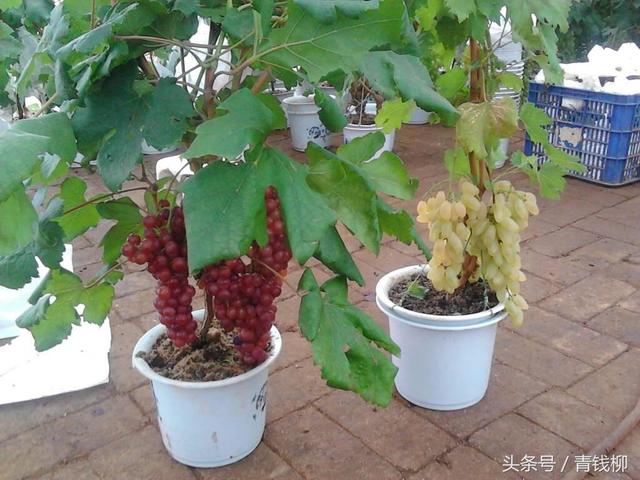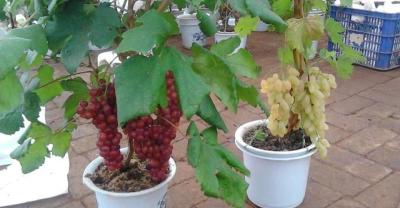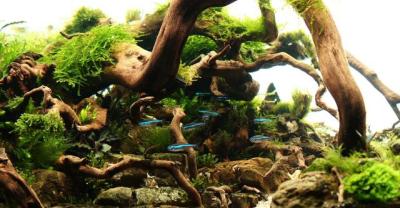Key points of planting techniques of potted grape
Key points of planting techniques of potted grape
1 varieties of potted grapes
There are many grape varieties, such as Jufeng, Red Fuji, etc., they mature early and have strong adaptability. According to the local weather, we can choose beautiful ears and grains, red or yellowish green varieties; choose varieties with moderate growth potential and short internodes, high seed setting rate and resistance to diseases and insect pests; select female flower varieties, which can not be pollinated because of self-pollination, we should consider the configuration of pollination varieties when potting, or grafting other varieties on the plant.

2 containers for potted grape cultivation
Potted grape containers usually use earthen pots, which have good drainage and air permeability, and the price is cheaper. Pottery pots, porcelain pots, plastic pots (buckets), wooden cases, buckets, cement tanks and other containers can also be used. The shape of the container is round, polygonal, rectangular and so on. There is also a difference in depth. Family potted plants are generally 25-30 cm in diameter and 15-30 cm in depth.
3 potted soil of potted grapes
It should have good air permeability and drainage performance, good physical and chemical properties, rich in organic matter and nutrients, suitable pH, no diseases and insect pests, and the matching ratio is 30% of garden soil, 20% of humus or organic fertilizer, and 20% of river sand. The prepared culture soil should be loose, fertile and have excellent physical and chemical properties. The prepared basin soil can be disinfected with 0.1% formalin spray, 500 ml per cube basin soil, and can be sterilized by high temperature steam if possible.
4 planting and management of potted grapes
The seedlings used in potted grapes can be bred by cutting, grafting, striping and so on. If cuttage planting is used, after the flowerpot is selected, the sterilized culture soil is loaded, and the cuttings are cut directly in the flowerpot to cultivate seedlings. When cutting, it is best to insert 2 cuttings in each pot for selection and retention, and often keep the soil in the basin moist. Grape plants of 1-3 years old can also be transplanted with soil masses before sprouting. When transplanting, it is necessary to re-cut the branches of the plant, generally leaving 1-3 strong branches. Transplanting that year, the focus is to restore the tree potential, cultivate the tree shape, lay a good foundation, do not bear fruit first.

5 shaping of potted grapes
Spherical: the plant leaves 2-3 long fruiting mother branches on the short trunk, bends and binds into a ball with the help of the wire frame, leaves 6-8 roots to bind around after the new shoot grows, and the plant is spherical.
Funnel shape: the plant leaves 3-4 main vines, which are obliquely distributed along the funnel frame, or the resulting mother branches are bent into upper and lower layers of rings, and the new shoots are tied around the funnel frame. Fan-shaped: the plant leaves 1 main vine and 1-2 lateral vines, the branches are distributed on the fan-shaped shelf, and the leaf curtain is flat and wide.
Spiral: the long fruiting mother branch is spirally tied to the bamboo pole, and the new shoot is upright or partially overhanging, showing a cylindrical shape.
Pay attention to control the polarity and retract or renew the bare branches in time. It is necessary to pick the heart in time and erase the deputy tip. For plants with too many new shoots, some of them should be removed to facilitate ventilation and light transmission. Wipe off the overgrown and stunted branches as soon as possible, leaving strong branches, so that large grapes can grow. Coring should be carried out when 4-8 leaves grow above the inflorescence. After coring, except for 3-4 leaves in the top accessory tip, one leaf was left in the other accessory tip.
7 thinning flowers and fruits of potted grapes
One ear (big fruit variety) or 1-2 ears (small fruit variety) is left on one fruiting branch. Carefully trim the ear axis before flowering combined with flower thinning. After flowering, the fruit is carefully thinned for the purpose of full and neat fruit development, and there is no need to pursue a large ear. For fruiting shoots, the heart is generally picked 3-5 days before flowering, and at the latest at the early flowering stage. For varieties with serious flower and fruit drop, such as Jufeng and Purple Rose, the heart can be picked 8-10 days before flowering.
8 fertilization of potted grapes
The application of basic fertilizer is combined with soil exchange, and topdressing is applied in liquid during the growing period to prevent root burning caused by excessive concentration. The unfruited potted seedlings started from 20 cm (6-7 leaves) of seedling height, applied cake fertilizer and water once every 7-10 days, and applied to the end of September, the fruited seedlings had better be applied once every 5 days. Foliar fertilizer spraying is effective and economical by spraying 0.1%-0.3% urea 2-3 times in the early growth stage, and spraying 0.3% potassium dihydrogen phosphate solution every 7-10 days for 3-4 times starting from the fruit expansion period.
9 watering of potted grapes
When watering, the water temperature had better be close to the basin soil temperature, and it is suitable to be watered before 10:00 in the morning and after 4:00 in the afternoon, generally every 2-3 days in early spring, with the increase of air temperature, the evaporation can be watered 1-2 days, and the watering times should keep the basin soil moist.
10 soil exchange of potted grapes
After the plants grew in the basin for 1 or 2 years, the original container space could not meet the requirements of root growth and development, and the nutrients of the basin soil gradually decreased. Therefore, the container needs to be changed from small to large or the basin soil needs to be replaced. The soil change period can be carried out at the end of autumn or before sprouting in spring. When changing the basin or soil, part of the withered roots should be cut off and watered immediately after the change, so as to facilitate the restoration of plant growth.
11 Disease and pest control of potted grape
There are few pests in potted grapes, and the common diseases are downy mildew, white rot, anthrax, black pox and so on. The grape can be sprayed with stone sulfur mixture of 3-5 Baume degrees during the dormant period, and 1 ∶ 0.5 ∶ 200 Bordeaux solution or 500 times compound carbendazim solution will be sprayed every 15 days after germination.
12 overwintering and anti-freezing of potted grapes
The main purpose of overwintering management is to prevent potted grapes from freezing injury and drying. The following protective measures can be selected according to local conditions; after winter pruning, potted grapes are removed, watered, ditched or buried with a depth of 30-50cm from the ground, and can also be placed in the corridor or on the balcony to cover the winter. No matter where you put it, you should pay attention to check the basin soil and keep it wet. the temperature should be 0-5 ℃.
13 Cuttage seedling of potted grape
Grape cuttings are cut in the spring when the temperature is between 15 and 25 ℃, and the sturdy branches (long and full, hypertrophy and fullness of bud eyes) are selected, and their thickness is more than 0.7cm (the thicker the survival rate is). Every 3 to 4 buds is a cuttage, and a branch segment of about 3 cm should be left above the terminal bud (the remaining short buds are easy to cause bud dehydration, and the lower end should be cut at about 1 cm of the lowest bud, leaving three buds and more than one leaf per cuttage. The row spacing of the cuttings is 20 × 25 cm and the sand thickness is 25 cm. The cuttings are obliquely inserted in the sand bed to expose a bud and leaves. Under semi-overcast conditions, full sunshine can be seen gradually after 3-4 weeks. The temperature is controlled between 20-25 ℃ and the humidity is about 80%. It can be rooting and transplanting in about 30-40 days. The cutting substrate should be loose and breathable without fertilizer, generally using river sand, vermiculite, perlite and peat.

- Prev

How do families grow potted grapes
How to grow potted grapes? potted grapes are glittering and translucent, exquisite and lovely, with green grape leaves and curved Saha branches. ...
- Next

"growing marijuana crazily only because of legalization."
Marijuana is indeed a "fast track" to other drugs, and many addicts start with marijuana. In 1996, California allowed marijuana to be used in.
Related
- Fuxing push coffee new agricultural production and marketing class: lack of small-scale processing plants
- Jujube rice field leisure farm deep ploughing Yilan for five years to create a space for organic food and play
- Nongyu Farm-A trial of organic papaya for brave women with advanced technology
- Four points for attention in the prevention and control of diseases and insect pests of edible fungi
- How to add nutrient solution to Edible Fungi
- Is there any good way to control edible fungus mites?
- Open Inoculation Technology of Edible Fungi
- Is there any clever way to use fertilizer for edible fungus in winter?
- What agents are used to kill the pathogens of edible fungi in the mushroom shed?
- Rapid drying of Edible Fungi

